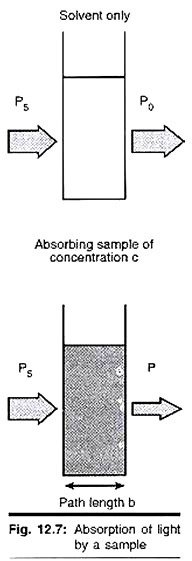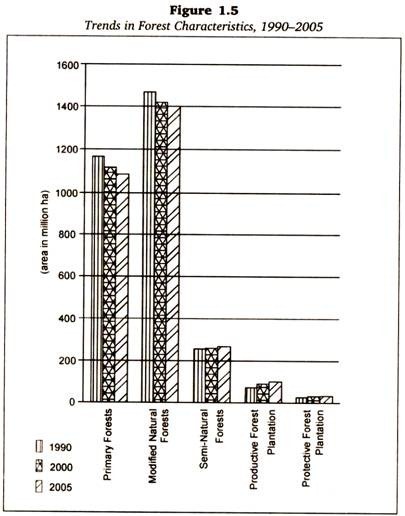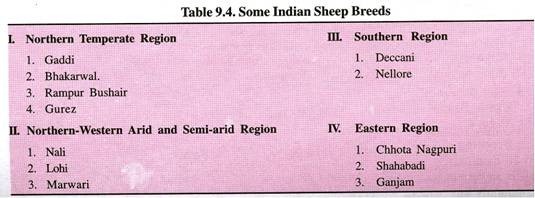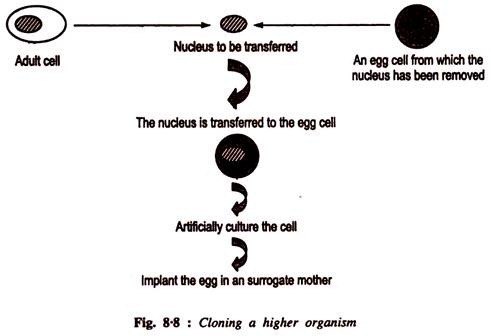A typical leaf consists of the following three parts (Fig. 2.55): 1. Hypopodium or Leaf-Base 2. Petiole or Mesopodium or Leaf Stalk 3. Leaf-Blade or Epipodium or Lamina.
Essay # 1. Hypopodium or Leaf-Base:
It is the lowermost part of a leaf by which it remains attached to the stem or branch.
In many cases, it is very difficult to demarcate the region of leaf base from the petiole. But in others, they can be demarcated properly.
They are of the following types (Fig. 2.56):
1. Pulvinus:
In some cases, the leaf base becomes, swollen and forms a sort of cushion called pulvinus. They are found in sensitive plant, Mimosa pudica of Fabaceae and mango, Mangifera indica (Fig. 2.56A) of Anacardiaceae.
2. Amplexicaul:
Occasionally, the base becomes flattened forming a complete sheath around the stem, called amplexicaul, e.g., Polygonum sp. of Polygonaceae, Aethusa cynapium (Fig. 2.56B):
3. Semi-amplexicaul:
When the leaf base becomes flattened and sheathed around the stem partially, it is called semi- amplexicaul as in palms. These are also called sheathing leaf bases.
They are common in monocotyledons, but also found in dicotyledonous families like Apiaceae, Araliaceae, and Ranunculaceae, etc. Sometimes the leaf bases become much extended and together form a stem-like structure i.e., false stem as found in banana, Musa balbisiana and plantain, Musa paradisiaca (Fig. 2.56C) of Musaceae.
4. Decurrent:
In some plants, leaf base and petiole both become flat, broad and winged. These ensheath the upper region of the node and are called decurrent leaf-bases, e.g., Symphytum officinale (Fig. 2.56D) of Boraginaceae, Laggera of Asteraceae.
Ligule and Auricle:
Ligule is the membranous outgrowth located at the junction of the petiole and lamina (Fig. 2.57). The ligules may be scaly, hairy etc. They are found in the members of the family Zingiberaceae and Poaceae (Cramineae). On the other hand, the auricle is the winged expansion of leaf base or hypopodium, which is continuous with the lamina (Fig. 2.57).
Thus the axis appears to be overlapped or clasped by such expanded leaf base. It is found in the members like Oryza sativa of Poaceae; Aegialitis rotundifolia of Plumbaginaceae, Lonicera caprifolium of Caprifoliaceae etc.
The stipules:
The lateral outgrowths from the leaf bases are called stipules. They usually occur in pairs. They are present in many dicotyledonous plants, but are rare in monocotyledonous plants.
Leaves with stipules are called stipulate (e.g., China rose, Hibiscus rosa-sinensis of Malvaceae etc.) and the leaves without stipule are called exstipulate (e.g., mango, Mangifera indica of Anacardiaceae; guava, Psidium guajava of Myrtaceae etc.).
Stipules are usually simple structures but they may be branched as in Ipomoea quamoclit of Convolvulaceae.
Depending on their longevity, they are of three kinds:
i. Caducous:
When the stipules fall off before the leaf unfolds, they are called caducous, e.g., banyan, Ficus benghalensis of Moraceae, Michelia champaca of Magnoliaceae etc.
ii. Deciduous:
When the stipules fall off soon after the unfolding of the leaf, they are called deciduous, e.g., Dillenia indica of Dilleniaceae etc.
iii. Persistent:
When the stipules remain throughout the life of leaf. They are called persistent, e.g., rose, Rosa centifolia of Rosaceae etc.
Forms of stipule:
The stipules are of ten (10) different types:
These are (Fig. 2.58):
1. Free-lateral,
2. Adnate,
3. Intrapetiolar,
4. Interpetiolar,
5. Ochreate
6. Foliaceous,
7. Tendrillar,
8. Spiny,
9. Convolute or bud scales, and
10. Winged. The last five types (6-10) are the modified forms of the stipule.
1. Free-lateral:
When two distinct tiny stipules are present on two sides of the leaf base, it is called free-lateral type, e.g., china-rose, Hibiscus rosa-sinensis of Malvaceae (Fig. 2.58A). They are also found in other families like Tiliaceae, Sterculiaceae, Fabaceae etc.
2. Adnate:
When the stipules are attached on both the sides of the petiole up to a certain height it is called adnate type, e.g., rose, Rosa centifolia of Rosaceae (Fig. 2.58B).
3. Intrapetiolar:
When the stipules occur on both the sides of opposite leaves, unite together by their inner margins and lie in the axil of leaves, it is called intrapetiolar type. It is also called axillary type, e.g., Paederia foetida and Gardenia jasminoides (Fig. 2.58C) of Rubiaceae etc.
4. Interpetiolar:
When the union takes place between stipules of opposite leaves by their outer margins, thereby the four stipules are transformed into two fused stipules, lies on the node between (inter) the petiole of the opposite leaves, it is called interpetiolar type, e.g., kadam, Anthocephalus indicus; rangan, Ixora coccinia (Fig. 2.58D) and some others of Rubiaceae; Strychnos nux-vomica of Loganiaceae etc.
5. Ochreate:
When the two stipules develop at the leaf base and fuse to form a tube-like structure enclosing a portion of the internode, it is called ochreate stipule.
It is the characteristic feature of the family Polygonaceae and found in Polygonum orientale, P. barbatum (Fig. 2.58E) Rumex vesicarius etc. except Corculum leptopus (Syn. Antigonon leptopus). It is also found in the members of the family Arecaceae like Calamus rotang (rattan palm), Korthalsia scaphigera (Malayasian scrambler) etc.
Sometimes the stipules become modified to carry on special functions as in the cases mentioned below:
6. Foliaceous:
When the stipules are modified into large, green and leaf-like structures which serve all the functions of a foliage leaf, it is called foliaceous type, e.g., wild pea, Lathyrus aphaca and pea, Pisum sativum (Fig. 2.59A) of Fabaceae.
7. Tendrillar:
When the stipule is modified into tendril it is called tendrillar type, e.g., sarsaparilla, Smilax macrophyila (Fig. 2.59B) of Liliaceae.
8. Spiny:
When the stipules are modified into spines it is called spiny type, e.g., jujube, Ziziphus mauritiana (Fig. 2.59C) of Rhamnaceae, Acacia arabica of Fabaceae. Such stipules serve as defensive organ.
9. Convolute or Bud scales:
When the stipules form membranous protective structures covering the buds and fall off during unfolding of leaves, they are called bud scales, e.g., peepal, Ficus religiosa and banyan, F. benghalensis and Artocarpus sp. (Fig. 2.59D) of Moraceae etc..
10. Winged:
When the stipules are modified into an expanded wing-like structure it is called winged type, e.g., Crotalaria alata of Fabaceae.
Function of stipule:
Stipule serves the following functions:
1. It prevents the axillary bud to fall-off,
2. It protects the next higher leaves as bud- scales,
3. Foliaceous stipule acts as photosynthetic organ,
4. Spiny stipule acts as defensive organ,
5. Tendrillar stipule acts as climbing organ,
6. Some stipules secrete mucilage and protect the buds.
Stipels:
When leafy outgrowth develops at the base of each leaflet of a compound leaf, it is called stipels, e.g., Vicia faba; Dolichos lablab (Fig. 2.60) and Desmodium gangeticum of Fabaceae.
Essay # 2. Petiole or Mesopodium or Leaf Stalk:
It is a more or less cylindrical and elongated structure; extending from leaf base to the base of the leaf blade.
It is the part of a leaf which connects leaf blade with the leaf base. The petioles are usually solid and cylindrical (e.g., peepal, Ficus religiosa of Moraceae), but they may be more or less flattened, grooved and soft (e.g., banana, Musa paradisiaca of Musaceae) or a hollow tube (e.g., papaw, Carica papaya).
The leaf without petiole is called sessile (glory lily, Gloriosa superba of Liliaceae; Mexican poppy, Argemone mexicana of Papaveraceae), while a leaf with a petiole is called petiolate (mango, Mangifera indica of Anacardiaceae).
The petioles get modified in different ways:
Modified Petioles:
1. Winged petiole:
In this type, the petiole becomes flattened and winged, which looks like lamina and carries out photosynthesis, e.g., Citrus sp. of Rutaceae (Fig. 2.61 A). In Nepenthes the petiole becomes partly winged and partly tendrillar.
2. Swollen or bulbous petiole:
In some aquatic plants, the petiole becomes swollen and spongy. This petiole is full of air and helps the plant to float, e.g., water chestnut, Trapa bispinosa of Onagraceae; water hyacinth, Eichhornia crassipes of Pontederiaceae (Fig. 2.61 B) etc.
3. Phyllode:
It is the petiole which becomes flattened in a vertical plane and takes up the appearance of a leaf blade. Petioles of such kind are called phyllode. In this case the lamina does not develop at all (Acacia moniliformis of Fabaceae, Fig. 2.61 C) or falls off at an early stage of development (A. recurva of Fabaceae). It decreases the rate of transpiration.
4. Tendrilar petiole:
In some plants, the petiole coils around the support and helps the plant in climbing, e.g., Aristolochia indica of Aristolochiaceae, Clematis gouriana of Ranunculaceae (Fig. 2.61 D) etc.
5. Spine:
In some plants, the lamina falls off after maturation leaving behind the petiole, which develops into rigid spine, e.g., Quisqualis malabaricum of Combretaceae.
Functions of Petiole:
Petiole serves the following functions:
1. It helps to conduct material in both the direction,
2. Due to bending and twisting action, the petiole brings the leaf blade in a position to get sufficient sunlight for photosynthesis,
3. The swollen or bulbous petiole helps in floating,
4. The tendrilar petiole helps in climbing.
Essay # 3. Leaf-Blade or Epipodium or Lamina:
It is the apical region of the leaf, which is normally green, thin and expanded.
The leaf blade or lamina is the most important green and flattened part of a leaf. It is generally thin and usually dorsiventrally differentiated. Sometimes, it becomes reduced, modified or even absent due to variation of environmental conditions.
In the middle of the lamina, a strong midvein is present which runs from base to apex, called midrib (main vein). When the midrib divides the lamina into two equal halves, it is called symmetrical leaf (mango, Mangifera indica).
On the other hand, in some cases, the lateral halves are unequal and the leaf is said to be asymmetrical (Mirabilis jalapa of Nyctaginaceae and in some members of Bignoniaceae etc.). The midrib or the main vein branches out in the lateral halves and arrange either in parallel or in reticulate fashion.
Lamina shows much variation as to their general outline, surface, apex and other characteristics. But the characteristics are constant for a particular species.







